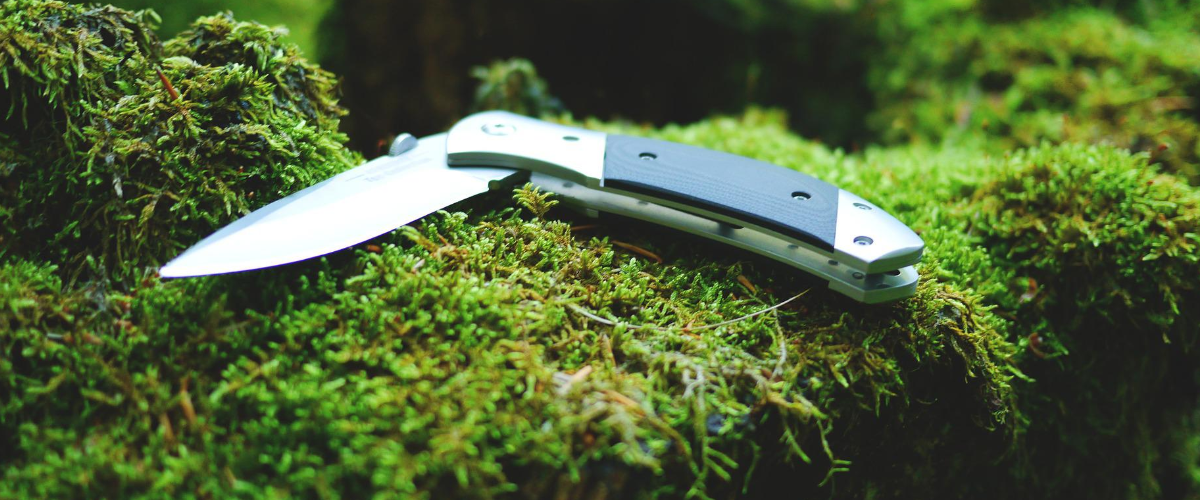From campers to boyscouts to full level preppers, odds are, you have a knife. Whether it’s a belt knife or a pocket knife, these multi-purpose, situational blades are still blades, and need to be maintained. You know: sharpened. But how exactly does one sharpen a knife correctly? Fortunately, the process is super simple, it just takes some patience and a steady hand.
Okay, it also requires a whetstone. These are special mineral blocks designed to be used as a rough surface for running metal blades over for sharpening. You can find them fairly easily in any hardware or home improvement store for around $15. Your standard stone will have two sides, each with a different color and level of roughness.
Step 1: Prepare the Whetstone
When you go to sharpen a whetstone, you don’t do it dry. This will create unevenness, heat, and other unhelpful issues. It’s common to either use water or mineral oil as a lubrication medium. If you are unsure which to use, consult the whetstone instructions. For the stone I have at home, it recommends soaking the stone in water until it stops emitting bubbles.
The two sides determine the grit and level of detail you can achieve. If the blade is already in good shape and just needs a touch up, opt for the finer grit side. Otherwise you will likely need to start on the lower grit.
Step 2: Find the Blade Angle
Take the blade you intend to sharpen. If its a small enough knife, then you should angle it so that the entire blade can be in contact with the stone. If not, no big deal, it just changes how you will move the blade when sharpening.
As for the height angle: try to have the blade be touching the stone at a 15 degree angle. A common suggestion is to have the spine of the blade be about the hight of two quarter coins stacked. This is a fine suggestion if your blade is about an inch wide. If you have a larger blade, then this might be to low. The specific hight is less important than being consistent, though. So make sure whatever it is, its something you can comfortably maintain.
Step 3: Run the Blade Backwards Down the Stone
Now for the actual sharpening part. Run the blade backwards (as if you are dragging the contact edge behind it) along the stone’s surface, maintaining contact and the height angle as described before. If your blade is too large to fit on the stone all at once, then move the blade diagonally, covering the full length of the edge over the entire swipe.
When you reach the stone’s full length, DO NOT push it back the opposite way. Instead, lift the blade, place it on the other end, and drag it again. Most folks are tempted to do a back and forth motion for efficiency, but this will only harm the blade and undo your sharpening efforts. Always drag the blade along the contact edge, with the spine leading the direction.
Repeat this 10 to 15 times. Then lift, flip the blade onto the other side, and repeat step 2 and 3 again.
Step 4: Even It Out with Alternating Passes
With both sides done, there’s one more step to making sure one side didn’t get too much more attention than the other. Place the blade back down on either side, and give it a run down the stone. Then lift the blade, flip to the other side, and drag back the other way. Repeat this back and forth method, always dragging spine first, for about 5 or 6 swipes each way. This will help even out the blade.
Step 5: Repeat at a Finer Grit
If you started on the finer grit initially, then you can skip this part. If you didn’t, then listen up. Now that you’ve done all that, repeat all of it again, but on the other side of the whetstone. The finer side, which will feel less rough, will help get a smaller, more refined and therefore sharper edge.
With that, you should be done. Clean off the blade and store it away for future use.
What About V Shaped Sharpeners?
You might be thinking about those knife sharpeners you see in kitchens and whatnot, where it has two sharpening edges positioned in a V shape so that you simply rest the knife blade on it and pull. Do those work? Well, technically yes. That type of sharpening can be effective and worthwhile, but results will very much depend on the brand and quality of the product. This is less of a concern with a traditional sharpening stone. If getting a good angle is a major concern, though, then this may be a preferable option.

